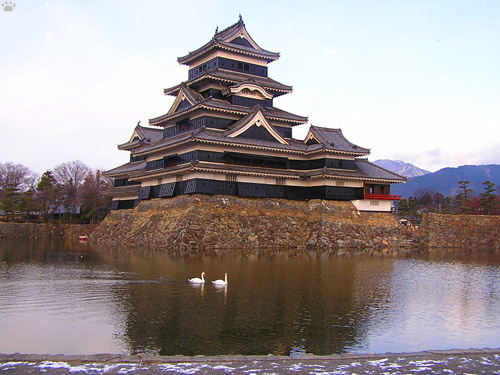
Matsumoto-jo, Matsumoto, Honshu.
Part 14. Japanese Castles (continued)
The best time to see a castle is late afternoon. You can visit the museum (almost every castle has a museum inside and often a few more around), then explore the surrounding park and wait for the night. Most castles are beautifully lit from nightfall until at least 10 o'clock. Matsumoto-jo is no exception.
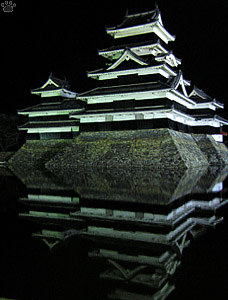 |
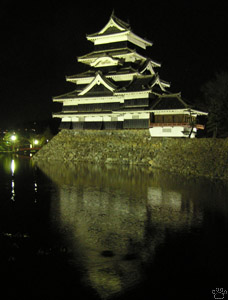 |
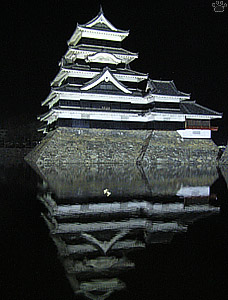 |
| Matsumoto-jo, Matsumoto, Honshu. |
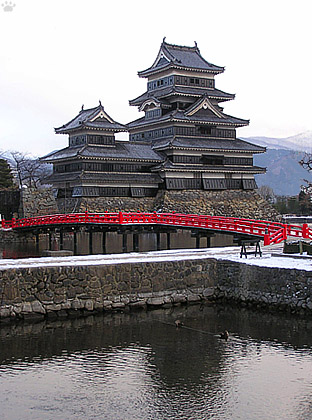
Like many large castles, Matsumoto-jo has two moats. |
Also known as Karasu ("Raven"), it was built in 1595, and is still in good shape. The donjon seems to have five floors, but there are six - one is a "hidden" level.
|
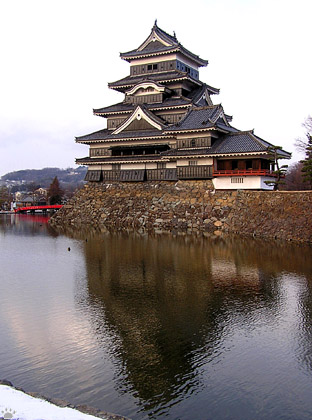
Matsumoto-jo. The white side structure is a moon-viewing pavilion. |
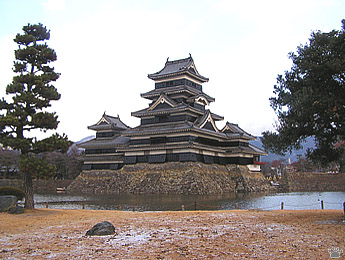
Most castles are surrounded by parks. Matsumoto. |
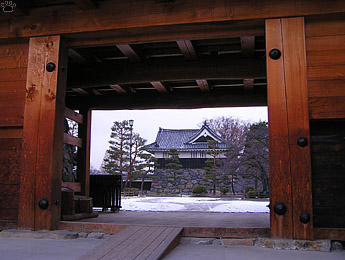
Outer gate, Matsumoto-jo. |
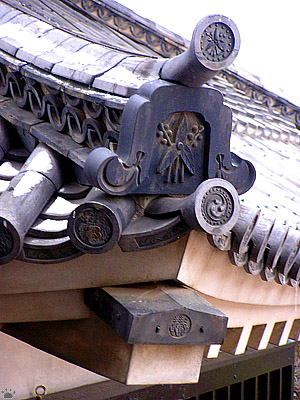
Roof detail, Matsumoto-jo. The water plaintain symbol is the
coat-of-arms of Mizuno family, the castle's owners before the last ones
of the six, the Hotta family (their sign was hydrangea flower). |
Like many castles, Matsumoto-jo has repeatedly changed ownership. Each ruling family mostly replaced the symbols of the previous ones, but you can still find them all: gentian of the Ishikawa, rombs of the Ogasawara, stars of the Toda, hollylock of the Matsudaira.
|
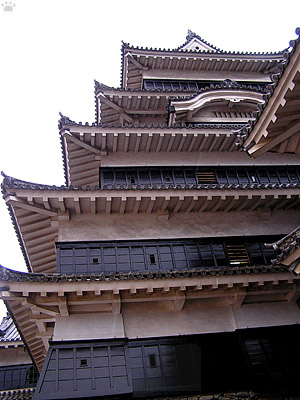
Donjon, Matsumoto-jo. The square openings are for musketeers, the
vertical rectangular ones - for archers. The panel in the lower left covers
a slit for dropping stones and pouring hot tar on attackers. |
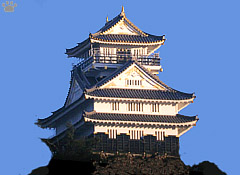
Gifu-jo, built in the 1200-s, destroyed in 1600,
rebuilt in 1955. Gifu, Honshu. |
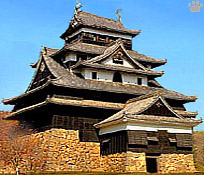
Matsue-jo, built in 1611, is one of the
smallest original castles. Matsue, Honshu. |
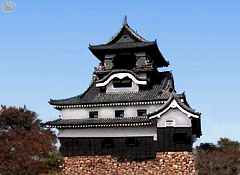
Inuyama-jo, built in 1537, is the oldest original
castle in Japan. Inuyama, Honshu. |
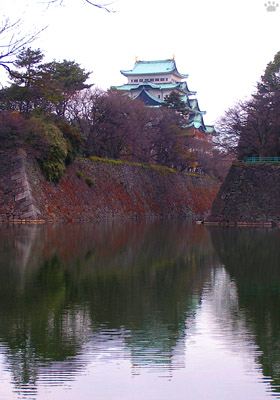
Nagoya-jo, built by Tokugawa Ieyasu in 1614, was destroyed
in 1945 and rebuilt in 1959. Nagoya, Honshu. |
Large castles surrounded by moats, such as Nagoya-jo, are all relatively recent - they could only be built after European building techniques were brought in by the Portuguese. Older castles are smaller, and usually sit on a hilltop or a mountaintop, like the three castles above and my personal favorite below.
|
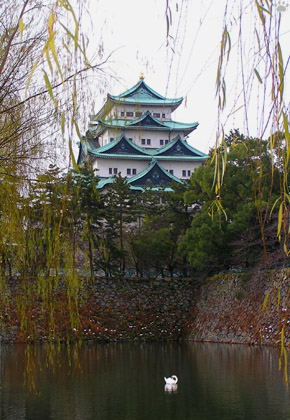
Nagoya-jo, Nagoya, Honshu. This is one of the least authentic
reconstructions, it even has an elevator. |
 |
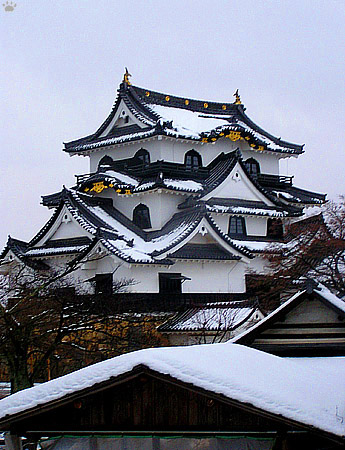 |
| Hikone-jo, Hikone, Honshu. |
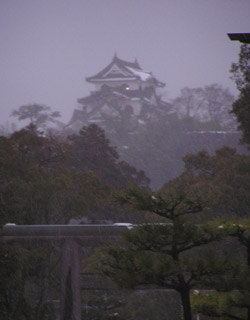
Winter evening, Hikone-jo. |
Surrounded by 1100 cherry trees, the wonderfully elegant Hikone-jo was built in 1622 on a hilltop overlooking Lake Biwa. It is one of the four castles (others are Matsumoto, Hikone and Inuyama) given the status of National Treasure in Japan. Like any castle, it is a military installation, a statement of brutal force and power. Why were these fortresses made so impossibly beautiful? If you know the answer, you are probably beginning to understand something about Japan. |
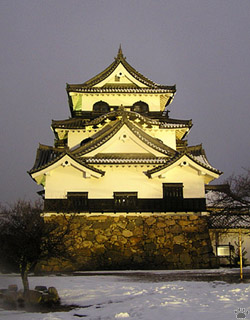
Hikone-jo at night. |
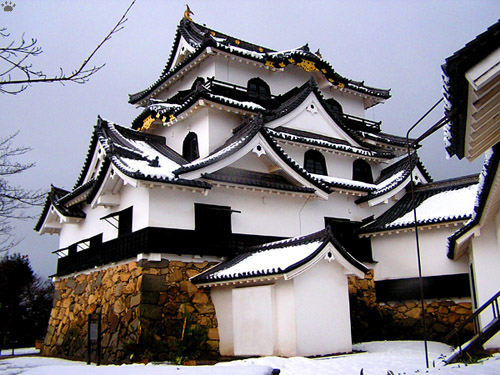
Hikone-jo, Hikone, Honshu. |
Back to Part 13 Home
|